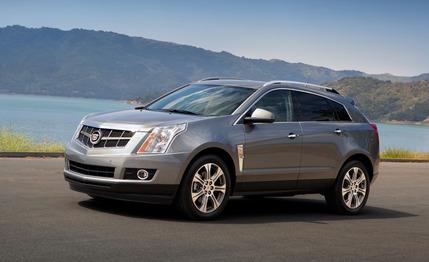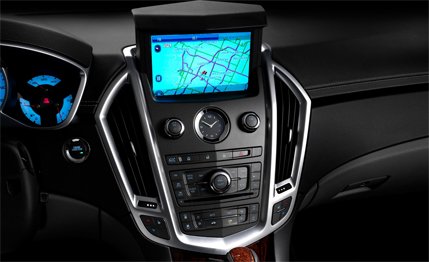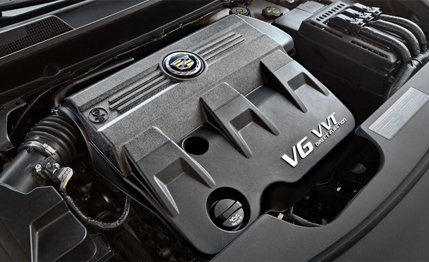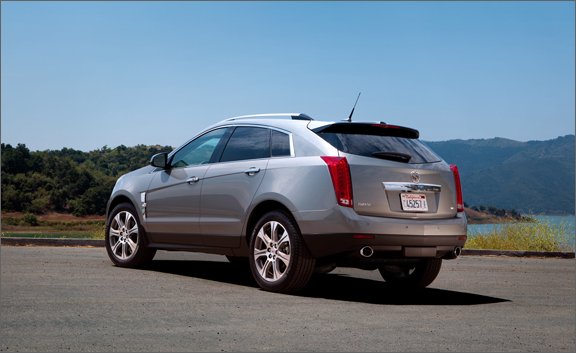
 First Drive Review
First Drive Review
The Cadillac SRX’s lead development engineer, Steve Kline, kicked off the debut of the 2012 Cadillac SRX by telling us, “If we’d told you back in 2009 that the SRX would move from number nine in the segment to number two behind the Lexus RX, you probably would have laughed.” Kline is right. C/D loved the previous, CTS-based SRX. Its rear-drive dynamics and interior packaging allowed it to win a comparison test and multiple 5Best Truck trophies but failed to endear it to customers. We would not have believed that a front-drive-based SRX would rocket up the sales charts, but that’s exactly what has happened.
For 2012, the SRX gets a major powertrain upgrade that might grow sales even further. The standard 265-hp, 3.0-liter V-6 is dead. New customers should be relieved that they won’t have to spin their engine all the way to 5100 rpm just to access a limp 223 lb-ft of torque. Likewise, the 3.0-liter will be relieved that it has been relieved of the SRX’s 4500-pound curb weight. Cadillac stopped offering the SRX’s previously optional engine, a turbocharged 2.8-liter V-6, earlier this year. Few mourned the loss of the 300-hp, single-turbo six. Its eulogy was probably filled with references to turbo lag, nonlinear power delivery, and the engine’s Saab origins.
When Two Become One
Replacing those two engines is a single 3.6-liter V-6. “This is the engine the SRX should have had all along,” said an engineer who didn’t wish to be named. The engine is similar to the 3.6-liter V-6 found in the CTS, but it’s adapted and tweaked for the SRX’s transverse arrangement. A few of the changes—like the clever exhaust manifolds integrated into the heads, the plastic intake manifold, and lighter connecting rods—help shave 20 pounds off the 3.6-liter V-6. Lightening the connecting rods allows the engine to rev a bit higher, and the higher revs lead to 308 hp at 6800 rpm. Other changes, like additional sound deadening in the firewall and a clever rubber-isolated high-pressure fuel line, keep engine noises out of the cabin. Putting rubber between the fuel line and engine nearly eliminates the injector ticking sound we’ve come to expect from direct-injection engines at idle.


The six-speed automatic carries over from the previous 3.0-liter V-6, but its computer has undergone a thorough reeducation. In normal mode, the transmission upshifts and downshifts predictably. Moving the shifter to the left accesses sport mode. In sport, the transmission holds gears longer, downshifts earlier, and resists moving into the top gears. Manual control is available, should you find that sport mode isn’t to your liking, but we found it to work remarkably well on the canyon roads northeast of Santa Barbara, California. A fourth transmission mode is accessed by a button marked “eco” that sits next to the shifter. Select eco, and the transmission switches to a fuel-conscious algorithm that seeks to upshift early and resists downshifts (eco mode also decreases throttle sensitivity, but we were hard pressed to notice a difference). Cadillac claims a 1-mpg boost is possible in eco mode. According to the EPA, a front-drive SRX will achieve 17 mpg in the city and 24 on the highway, which is one worse in each test than the 2011 model’s 3.0-liter and one of few downsides to this engine swap. All-wheel-drive versions come in at 16/23, which is down one in the city cycle compared with the 3.0-liter. Compared with the turbo V-6, the 3.6-liter improves by 1 mpg in the city and highway cycles, plus the new V-6 doesn’t require premium fuel as did last year’s turbo.


With 265 pound-feet of torque available from 2400 rpm, the 3.6-liter doesn’t have to work nearly as hard as the 3.0-liter to move the SRX from a stop. The torque curve is nearly flat from 2400 rpm to 5300 rpm, which makes for smooth, uninterrupted acceleration. We expect the new engine will match—or nearly match—the turbo V-6’s 7.2-second 0-to-60 time. Even when whipped up to its 6800-rpm power peak, the V-6 remains refined and pleasant. There’s an appropriate amount of intake snarling and exhaust rush. The unending strain of the 3.0-liter is gone.
That About Covers It
Other changes to the SRX are minor. The cargo area gets a configurable rail system similar to the one found in Mercedes-Benz products, the lock switches have migrated to the doors to combat JD Power complaints related to the center-console mounted lock/unlock switch—although a redundant switch remains on the center console—a heated steering wheel comes in all but the base trim level, Bluetooth is standard on all trim levels, and there’s a new 20-inch wheel design, as well as a new ebony interior color that has contrasting white stitching on the seats and dashboard. The razor-studded-potato exterior of the SRX remains unchanged.
Two suspension setups are available. Most versions will come with the base FE2 arrangement that has twin-tube shocks and smaller anti-roll bars than the sportier FE3 chassis. FE3-equipped SRXs get active shocks that adjust stiffness according to vehicle speed, load, steering input, and road condition; variable-assist steering that tightens up at speed; and 20-inch wheels and accompanying slimmer tire sidewalls. Slipping the transmission into sport mode also puts the shocks into a sportier and stiffer mode. Both suspensions have the same spring rates. Although roll control is slightly better with the FE3 suspension, there isn’t a huge gain in sporty feel or handling, and we’d be hard pressed to pay extra for it. Either way, the SRX makes the Lexus RX feel like a sloppy mess.

